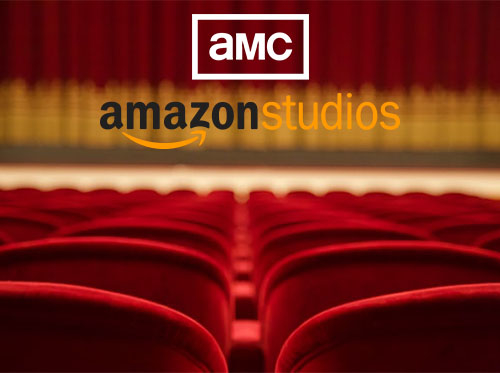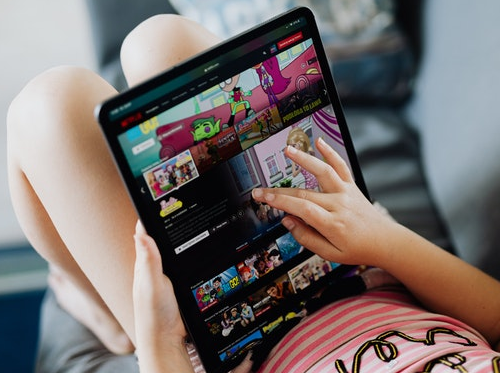Breaking Down SiriusXM Video vs. Spotify Video
What Happened?
On November 13, 2019 SiriusXM announced a new initiative called “SiriusXM Video”, which will publish daily video from dozens of the audio service’s top shows to its subscription apps. The launch builds upon SiriusXM’s 2018 launch of “Howard Stern Video”, which brought “new fans into the world of Howard Stern and [provided] a new dimension of entertainment for long-time fans.”
SiriusXM Video will include in-studio performances, interviews and in-studio moments from SiriusXM’s acclaimed programming lineup across music, talk and sports. Interestingly, SiriusXM’s doubling down on video comes off the heels of Spotify pivoting away from video, which was a major initiative the mobile-first audio streamer kicked off in 2016, and subsequently shuttered, in late 2018.
Why Is This Interesting?
As audio consumption continues its rapid growth trajectory via format evolution (podcasts, audio books, Alexa skills), AI interactivity (Siri, Alexa, Google Assistant) and ‘smart’ hardware innovation (speakers, earbuds, in-car), market participants are aggressively positioning and placing product bets to acquire audio customers today for deeper future monetization.
It’s therefore fascinating to observe SiriusXM and Spotify, two of the audio industry’s largest players, pursue seemingly opposite approaches to video. Do each have a fundamentally different POV on the efficacy of video for competitive differentiation and user growth? Or, is one simply piggy backing off the learnings of the other?
We believe it’s the latter.
In our analysis, we’ll address the role video plays in the business of audio, the evolution of each company’s video offerings, how each company arrived at its strategy conclusion, and what these takeaways inform about the state of the audio and media industries.
We will present learnings on the role of digital products, team DNA, IP-driven user acquisition, the evolution of cars as a media distribution and UA channel, the value of celebrities and “pivot to video” pitfalls.
Overall, the diverging approaches of SiriusXM and Spotify highlight that a company’s leadership be strongly self aware of the primary role its products / services play in providing consumer delight, and the DNA of its core team that enables excellence and innovation in pursuit of said delight. Otherwise, the company risks rapidly diluting its marketplace standing, particularly in a high stakes and ultra competitive market like that of digital audio.
PART 1: BACKGROUND – WHY DID SPOTIFY AND SIRIUS NEED TO EVOLVE?
The Spotify Video Saga: Searching for the “Glass Slipper” Content Strategy
Due to the low-margin economics of music licensing, Spotify has long been seeking content and format alternatives to bolster its profitability profile. For a few years, video thus became Spotify’s focus.
In 2015, Spotify announced its first foray into video with “Video Capsule”, which allowed users to view licensed clips of popular programming, which were often completely unrelated to music. These clips included SportsCenter highlights, Vice News segments and clips from Comedy Central’s “Broad City”. In 2016, Spotify expanded its video initiative (albeit with a more narrowed focus), adding a robust slate of premium, episodic, original programming centered around music performances, music culture and musician profiles.
However, in the fall of 2017 Spotify hired a new head of Content / Studios, Courtney Holt, who cancelled Spotify’s entire slate of original series. Courtney decided to retool Spotify’s approach to video and focus on platform-native formats. A few months later, in early 2018, Spotify launched “Spotlight”, a new audio-visual format that provided visually-enhanced audio programming from a handful of content partners like Buzzfeed, Refinery29 and Crooked Media. Holt explained the thinking behind this new initiative, “I know people are coming to Spotify to listen first, but we’re starting to build something new. I want to create content that can be seen and listened to”.
This marked a significant departure from Spotify’s prior video launch philosophy. Rather than attempt to redefine its users’ consumption habits – forcing users to treat Spotify as a destination for uniquely different offerings in music AND video (i.e. the formats were mostly unrelated between the two verticals) – Spotify embraced its core user behavior and source of delight (audio!) and tailored a content strategy accordingly.
This return to form culminated in February 2019, when Spotify CEO Daniel Ek proclaimed that the company’s path-forward will be “Audio-First”. In that same month, Spotify announced the acquisition of Gimlet Media and Anchor for an estimated price tag of ~$340mm. The massive investment into premium and UGC podcast content signaled that podcasts were the complementary content vertical that Spotify had sought since 2015.
Unlike video, podcasts are an organic extension of Spotify’s core application and user behavior. The bet seems to be paying off. According to Spotify executive Lauren Jarvis at a 2019 CES panel, Spotify listeners who discover podcasts on the platform are 2.3x more engaged with the product holistically. Further, the company’s recent quarterly earnings report indicated that the number of people listening to podcasts on the streamer grew 40% QoQ.
By doubling down on audio formats, Spotify identified a new path forward to offset the low margin economics of music streaming, and both enhanced and differentiated its content offerings to improve UA efforts and platform retention.
So, what is driving SiriusXM to make its aggressive new video bet?
Leveling the Playing Field: Car Ownership Disruption and the Commodification of In-Car Entertainment.
The average American spends over 293 hours driving each year, and nearly all vehicles are equipped with radios. Radio entertainment thus reaches 92% of US adults weekly, and has greater audience penetration than any other content consumption channel, including TV and smartphone apps.
The car is a major distribution medium for audio content…and SiriusXM has dominated this customer access point for years. The company has agreements with every major automaker to offer its satellite radio services in their vehicles, and these partnerships have driven the majority of its 34mm subscribers.
However, as (1) the fundamental dynamics of car ownership face potentially dramatic transformation, and (2) Internet-enabled audio becomes more prevalent in cars, SiriusXM will no longer be able to rely on in-car entertainment as its primary distribution channel, nor its automaker partnerships for its UA strategy.
-
US personal car ownership is not declining at the precipitous rate many have heralded. BUT, macro data may indicate a meaningful reversal could be on the horizon. Younger generations are exhibiting increasing preference for not owning cars (35% of millennials are willing to adopt ride-sharing instead of owning a car, compared to only 7% of Boomers), and the ride sharing market continues to grow rapidly – revenue from “disruptive options” like Uber/Lyft/Lime/et al and self-driving cars are projected to increase from 1% of the total transportation market today to 25% by 2030. Further, macro household trends indicate rapid urbanization of the global population, and urban dwellers typically have a lower car ownership rate. (NOTE: honestly, the vast amount of driver data across generations and household types can be interpreted many ways – our net takeaway at RockWater is that while not 100% certain, we are likely at a major car ownership inflection point…and that would be a big deal for many companies like SiriusXM).
-
The improvement of Internet connectivity and software interfaces within cars could massively disrupt SiriusXM’s hegemony of premium in-car entertainment. Today, only 12% of drivers and passengers cite online streaming as their primary in-car audio source. But, as 5G technology growth empowers the rise of connected in-car interfaces, such as Apple CarPlay and Android Auto, audio streamers like Spotify / Apple / more will be just as accessible in the car as they are on handheld devices outside the car. In turn, SiriusXM’s primary distribution channel advantage could be neutralized.
With material changes potentially ahead for car ownership, and in-car audio content options (supply) rapidly increasing and facing commoditization, SiriusXM could be facing rapid deterioration in its ability to efficiently acquire customers and deliver a differentiated user experience relative to peers.
SiriusXM is aware it must evolve, and video is a key component of the company’s new strategy shift.
So, why is video the answer for Sirius, but not for Spotify? Because the core products, and challenges facing those core products, are fundamentally different for each player.
PART 2: SPOTIFY CANCELS VIDEO. SIRIUS EMBRACES VIDEO…AND THEY’RE BOTH RIGHT.
Catering to Core User Experience and the Role of Digital Products
To understand SiriusXM’s near-simultaneous pivot towards video while Spotify pivots away from it, it’s critical to understand the differences in SiriusXM’s core product and content offerings.
When Spotify announced its pivot away from video in 2018, Courtney Holt (Head of Spotify Studios) explained, “A giant slate of video is not what people are expecting on the platform. It’s not where we’ve seen interest and intent”.
The content strategy shift reflects a commitment to Spotify’s longstanding audio and mobile-first Spotify user experience, rather than seeking to redefine how users perceive and interact with the product. In contrast, the core SiriusXM experience has historically been car-first. As personal car ownership and transportation face disruption, and audio options become ubiquitously available in-car, SiriusXM needs to redefine both (1) how it accesses listeners and (2) provides entertainment differentiation and delight to its consumers via these new access points.
While enhanced connectivity disrupts the in-car environment, it also creates exciting new consumer distribution pathways…and SiriusXM is moving quickly to take advantage. In addition to iOS and Android mobile apps, SiriusXM is also accessible through most audio and video-enabled devices (smart speakers, smart TVs, blu ray and media players, gaming consoles, etc). Further, SiriusXM is keenly aware that different ‘pipes’ requires content supply innovation…as the consumption environment changes, so must the experience.
As described by Sirius, the new digital pathways enable “a new dimension of entertainment for long term fans”. SiriusXM Video is a key component of this strategy, which is briefly articulated by Kelly Flynn, SVP of Video Programming:
“We are thrilled to deliver video from a broad array of our incredible talk, sports, music, comedy and specialty programming. Nowhere is there more depth and breadth of content than across the SiriusXM universe, and video is the perfect complement to the amazing radio moments that happen here every day. We are giving our subscribers more new and exciting ways to connect with their favorite guests, performers, hosts and shows. Now, you can see what you’ve been hearing.”
SiriusXM Video is positioned as a natural extension of SiriusXM’s core programming into a broader and richer media environment. The initiative allows SiriusXM to meaningfully transcend the car by building upon its core content strengths and user value proposition (premium talent and formats). The intended double win is continued delight to core fans as consumption channels evolve (retention), as well as acquisition of new and younger fans by providing a unique and omni-channel “in-studio” entertainment experience.
For SiriusXM, the goal is not to become a dual audio / video service, as Spotify once attempted. Instead, the goal is to transform from an in-car audio channel to a device-agnostic, universally accessible, premium entertainment platform.
Audio platforms win when listeners build habits with them. Millions of car-owners have built habits around listening to SiriusXM on their daily commutes. Now, as habits shift around both transportation and audio consumption, the challenge will be for SiriusXM to become as synonymous with streaming as it is with car radios.
Yet, simply launching ‘video’ does not accomplish that goal.
Doing video well is incredibly challenging, and the ‘pivot to video’ is an increasingly tougher proposition in today’s highly competitive and premium video landscape. Let’s therefore dive into some unique dynamics at play in the SiriusXM Video launch, and the insights that it reveals for the broader video ecosystem…
In our follow-up piece, we’ll dive deeper into SiriusXM’s content and talent strategy, how it compares to other video bets, and we’ll close with key takeaways for operators navigating today’s media streamer landscape.
—
Ping us here at anytime. We love to hear from our readers.



